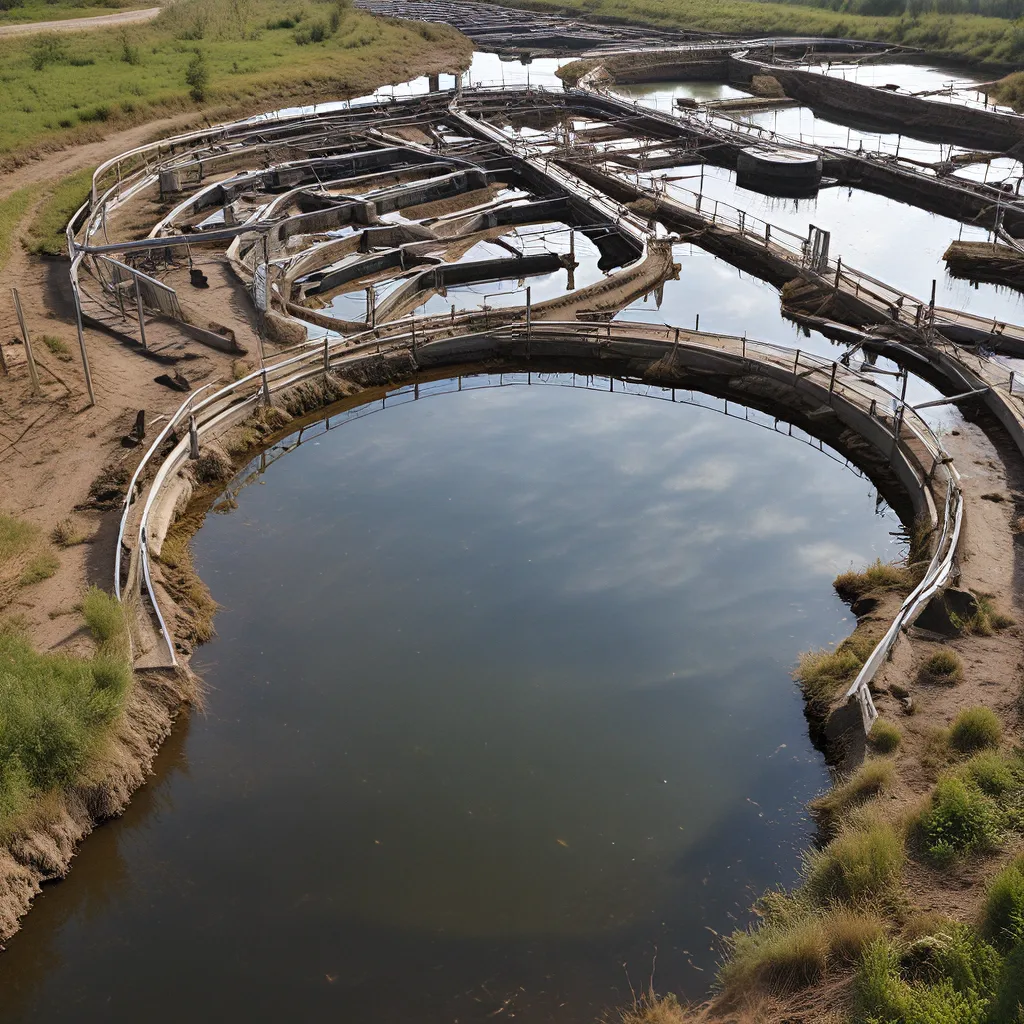
As a passionate advocate for sustainable solutions, I’ve always been fascinated by the intricate world of wastewater treatment. It’s a domain that not only tackles the pressing environmental challenge of managing our water resources but also holds the key to unlocking the bioeconomy – a future where our waste becomes a valuable commodity.
In this article, I’ll dive deep into the symbiotic relationship between wastewater treatment and the burgeoning bioeconomy, exploring how the power of microbial processes can transform the way we think about waste. Prepare to be amazed as we uncover the untapped potential that lies beneath the surface of our water systems.
The Bioeconomy: Maximizing the Value of Waste
The concept of the bioeconomy has been gaining traction in recent years, with governments and industries alike recognizing the immense value that can be extracted from our waste streams. At its core, the bioeconomy is a circular economic model that treats waste as a valuable resource, rather than something to be discarded.
According to the United States government, the bioeconomy encompasses the production of renewable biological resources and their conversion into food, feed, bio-based products, and bioenergy. This paradigm shift is crucial, as it challenges the traditional linear economy where we extract resources, use them, and then dispose of the waste.
In the context of wastewater treatment, the bioeconomy presents an exciting opportunity to transform our approach. Rather than simply treating wastewater to remove contaminants, we can harness the power of microbial processes to extract valuable resources, such as biofuels, bioplastics, and even biofertilizers.
As the federal government website notes, these bio-based products can then be reintegrated into our economic and industrial systems, creating a closed-loop system that minimizes waste and maximizes resource efficiency.
Microbial Marvels: The Secret Weapons of Wastewater Treatment
At the heart of this bioeconomy revolution lies the humble world of microbial processes. These microscopic powerhouses, which include bacteria, archaea, and fungi, are the unsung heroes of wastewater treatment.
Imagine a bustling city, where the daily flow of water and waste is akin to the beating heart of the urban landscape. As this wastewater makes its way through the treatment facilities, it’s the microbial communities that spring into action, working tirelessly to break down and transform the organic matter.
These microbes are true alchemists, capable of converting complex compounds into simpler, more manageable forms. Through a series of intricate metabolic pathways, they can extract energy, nutrients, and even valuable bioproducts from the wastewater, all while purifying the water for safe discharge or reuse.
As the research from ScienceDirect suggests, the diversity and resilience of these microbial communities are key to the success of wastewater treatment systems. By harnessing their capabilities, we can unlock a treasure trove of opportunities, from biofuel production to the creation of bioplastics and biofertilizers.
Embracing the Power of Microbes: Innovations in Wastewater Treatment
As we delve deeper into the world of wastewater treatment and the bioeconomy, it’s clear that innovation is the driving force behind our progress. Researchers and engineers are continuously exploring new ways to optimize the microbial processes that lie at the heart of this remarkable system.
One promising avenue is the development of advanced bioreactor technologies, where the microbial communities can be carefully cultivated and monitored to maximize their efficiency. These specialized reactors can be designed to target specific compounds or products, creating a tailored environment for the microbes to thrive.
Imagine a bioreactor that’s engineered to produce biofuel from the organic matter in wastewater. By carefully controlling the temperature, pH, and nutrient levels, the microbial inhabitants can be encouraged to channel their metabolic prowess into the production of biogas or biohydrogen – clean, renewable energy sources that can be harnessed to power our communities.
But the potential of microbial processes doesn’t stop there. At Alpha Wastewater, we’re exploring the use of microbial communities to create bioplastics – eco-friendly alternatives to traditional petroleum-based plastics. By leveraging the natural abilities of these microbes, we can transform waste into valuable, sustainable materials that can be reintegrated into our economy.
The Future of Wastewater: A Symbiotic Relationship
As we look to the future, it’s clear that the bioeconomy and wastewater treatment are inextricably linked. The success of one depends on the other, and it’s up to us to foster this symbiotic relationship.
Imagine a world where every drop of wastewater is viewed as a treasure trove of untapped potential. Where the microbial communities that have long been the unsung heroes of our water systems are celebrated and empowered to work their magic. A world where waste is no longer a burden, but a valuable resource that fuels our bioeconomy and propels us towards a more sustainable future.
This vision may seem like a distant dream, but with the right innovations, policies, and public-private partnerships, it can become a reality. Wastewater treatment is not just about removing contaminants and cleaning water – it’s about unlocking the power of microbial processes to transform our waste into a renewable, circular economy.
So, as you flush your toilet or turn on the tap, take a moment to appreciate the incredible work that microbes are doing behind the scenes. They are the unsung heroes of our water systems, and with our support and investment, they can help us build a more sustainable, bioeconomy-driven future.